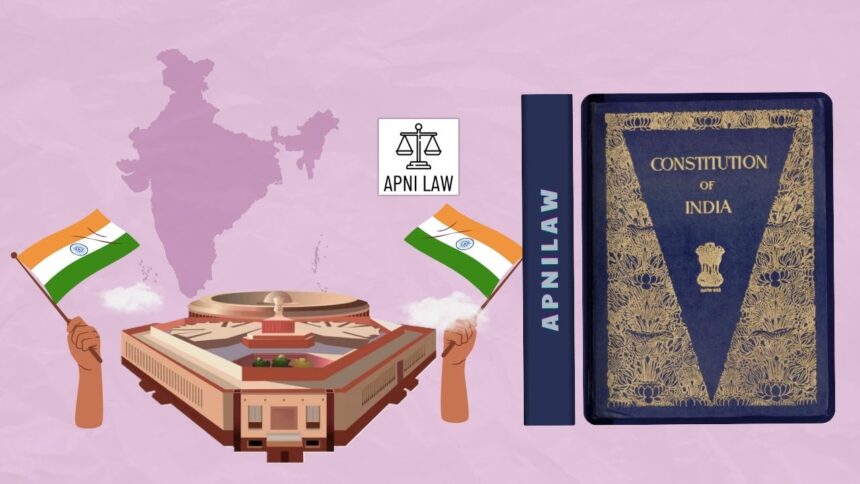Introduction
The Indian Constitution reflects a delicate balance between the ideals of liberty and equality, justice and welfare, rights and duties. Two important pillars that uphold this balance are the Fundamental Rights (Part III) and the Directive Principles of State Policy (Part IV). Fundamental Rights are enforceable guarantees that protect individual liberty, while Directive Principles guide the State in framing policies to achieve social and economic justice.
However, a debate has always surrounded their relationship: What happens when Directive Principles conflict with Fundamental Rights? Should individual freedom take precedence over collective welfare, or can they work together in harmony? Over decades, the Supreme Court of India has addressed this tension, moving from prioritizing Fundamental Rights to recognizing a balance where both principles complement each other.
Fundamental Rights: The Cornerstone of Liberty
Fundamental Rights (Articles 12–35) act as guarantees against arbitrary state action. They include:
- Right to Equality (Articles 14–18)
- Right to Freedom (Articles 19–22)
- Right against Exploitation (Articles 23–24)
- Right to Freedom of Religion (Articles 25–28)
- Cultural and Educational Rights (Articles 29–30)
- Right to Constitutional Remedies (Article 32)
These rights are enforceable by courts, meaning any citizen can directly approach the judiciary if the State violates them. Dr. B.R. Ambedkar even called Article 32 the “heart and soul of the Constitution.”
Directive Principles of State Policy: Goals of a Welfare State
In contrast, Directive Principles (Articles 36–51) are non-justiciable, meaning they cannot be directly enforced in court. Instead, they serve as guiding principles for the State to establish a welfare society. They include:
- Socialist principles like equal pay for equal work and protection against economic inequality.
- Gandhian principles like promoting cottage industries and organizing village panchayats.
- Liberal-intellectual principles like uniform civil code and international peace.
The framers deliberately kept them non-binding but recognized them as essential for achieving social and economic democracy, complementing the political democracy ensured by Fundamental Rights.
The Conflict: Rights vs. Directive Principles
The conflict arises when laws enacted to implement Directive Principles appear to violate Fundamental Rights. For instance:
- A law imposing land ceiling to reduce inequality (DPSP) may infringe on the right to property (Fundamental Right, before 1978).
- Reservation policies for weaker groups (DPSPs) may clash with the right to equality.
- Regulation of trade for public welfare (DPSPs) may conflict with the freedom of trade.
This tension became a recurring theme in constitutional litigation, especially in cases concerning land reforms and economic justice.
Judicial Interpretation of the Conflict
1. Champakam Dorairajan v. State of Madras (1951)
The Supreme Court initially gave primacy to Fundamental Rights. It struck down a communal reservation law, stating that Directive Principles must yield to Fundamental Rights if there is a conflict.
2. Golaknath v. State of Punjab (1967)
The Court reinforced that Parliament cannot amend Fundamental Rights to give effect to DPSPs. This ruling froze the State’s ability to implement many welfare reforms.
3. Kesavananda Bharati v. State of Kerala (1973)
A historic shift occurred when the Court recognized that both Fundamental Rights and DPSPs are complementary. It ruled that Parliament can amend Fundamental Rights to implement DPSPs, but it cannot alter the basic structure of the Constitution.
4. Minerva Mills v. Union of India (1980)
The Court emphasized harmony and balance between Fundamental Rights and DPSPs. It declared that giving absolute primacy to either would disturb the basic structure. This case firmly established that rights and directives must co-exist.
Harmonisation Between Fundamental Rights and DPSPs
Over time, the judiciary and Parliament have worked to harmonize the two. Several amendments and rulings reflect this effort:
- The 25th Amendment (1971) allowed laws giving effect to DPSPs (like equitable distribution of resources) to override certain Fundamental Rights.
- The 42nd Amendment (1976) reinforced the importance of DPSPs but was later read down by the Court to protect the basic structure.
- The 86th Amendment (2002) added the Right to Education (Article 21A), transforming a Directive Principle into a Fundamental Right.
This evolution shows how both sets of principles complement each other: Fundamental Rights protect individual liberty, while Directive Principles push the State toward social and economic justice.
Importance of the Balance
The balance between Fundamental Rights and Directive Principles ensures that neither liberty nor welfare dominates the constitutional framework. Without Fundamental Rights, citizens could become victims of State overreach. Without Directive Principles, democracy would remain limited to political equality while ignoring economic disparities. Together, they create what the Supreme Court has called the “conscience of the Constitution.”
Frequently Asked Questions
1. Why do conflicts arise between Fundamental Rights and DPSPs?
Conflicts arise because Fundamental Rights focus on individual liberty, while DPSPs aim at collective welfare. Laws to implement DPSPs, such as land reforms or reservations, sometimes appear to infringe upon Fundamental Rights.
2. Can Directive Principles override Fundamental Rights?
No. Directive Principles cannot override Fundamental Rights. However, Parliament can amend Fundamental Rights to align them with DPSPs, provided the basic structure of the Constitution remains intact.
3. How did the judiciary resolve the conflict?
Through cases like Kesavananda Bharati and Minerva Mills, the judiciary established that Fundamental Rights and DPSPs must be harmonized. Neither can claim absolute supremacy, and both must work together to achieve the goals of the Constitution.
Conclusion
The story of DPSPs vs. Fundamental Rights reflects the evolving nature of India’s constitutional law. While early judgments prioritized Fundamental Rights, later cases recognized that the two are not enemies but partners in building a just society. Fundamental Rights secure liberty, while Directive Principles aim to create conditions where liberty is meaningful for all.
The true genius of the Indian Constitution lies in this balance. By harmonizing individual rights with social justice, it ensures that democracy in India is not only political but also economic and social. The journey from Champakam Dorairajan to Minerva Mills shows how the Constitution has grown to reflect both freedom and fairness, safeguarding the vision of justice for every citizen.
For any specific query call at +91 – 8569843472








